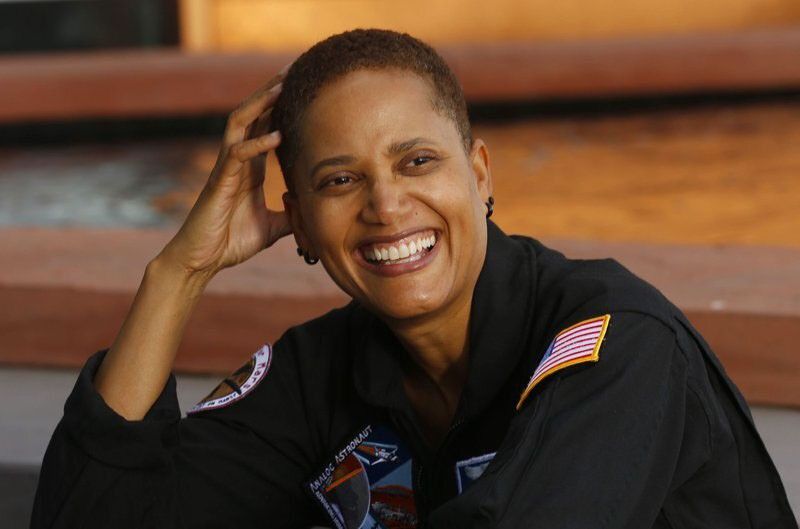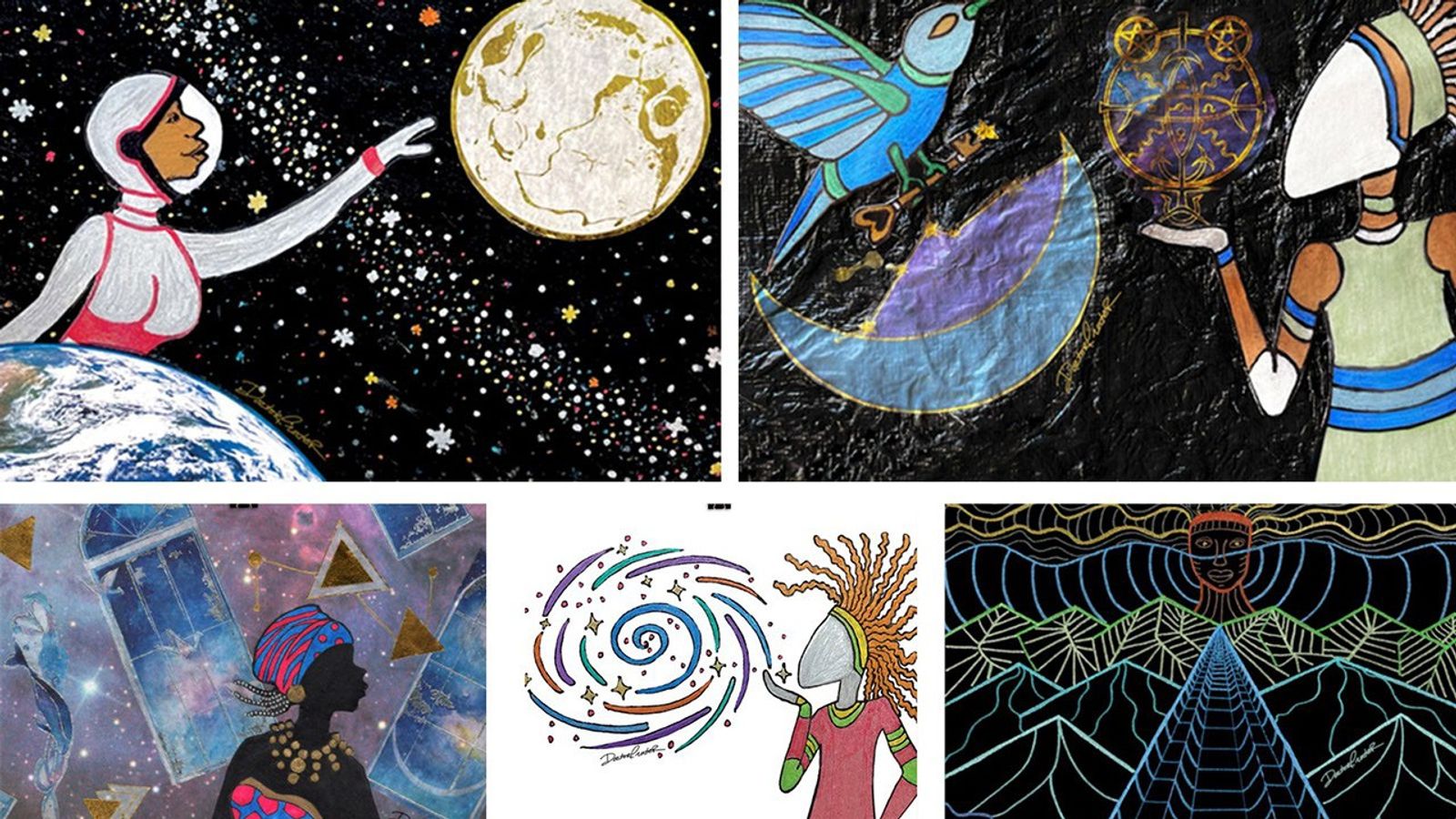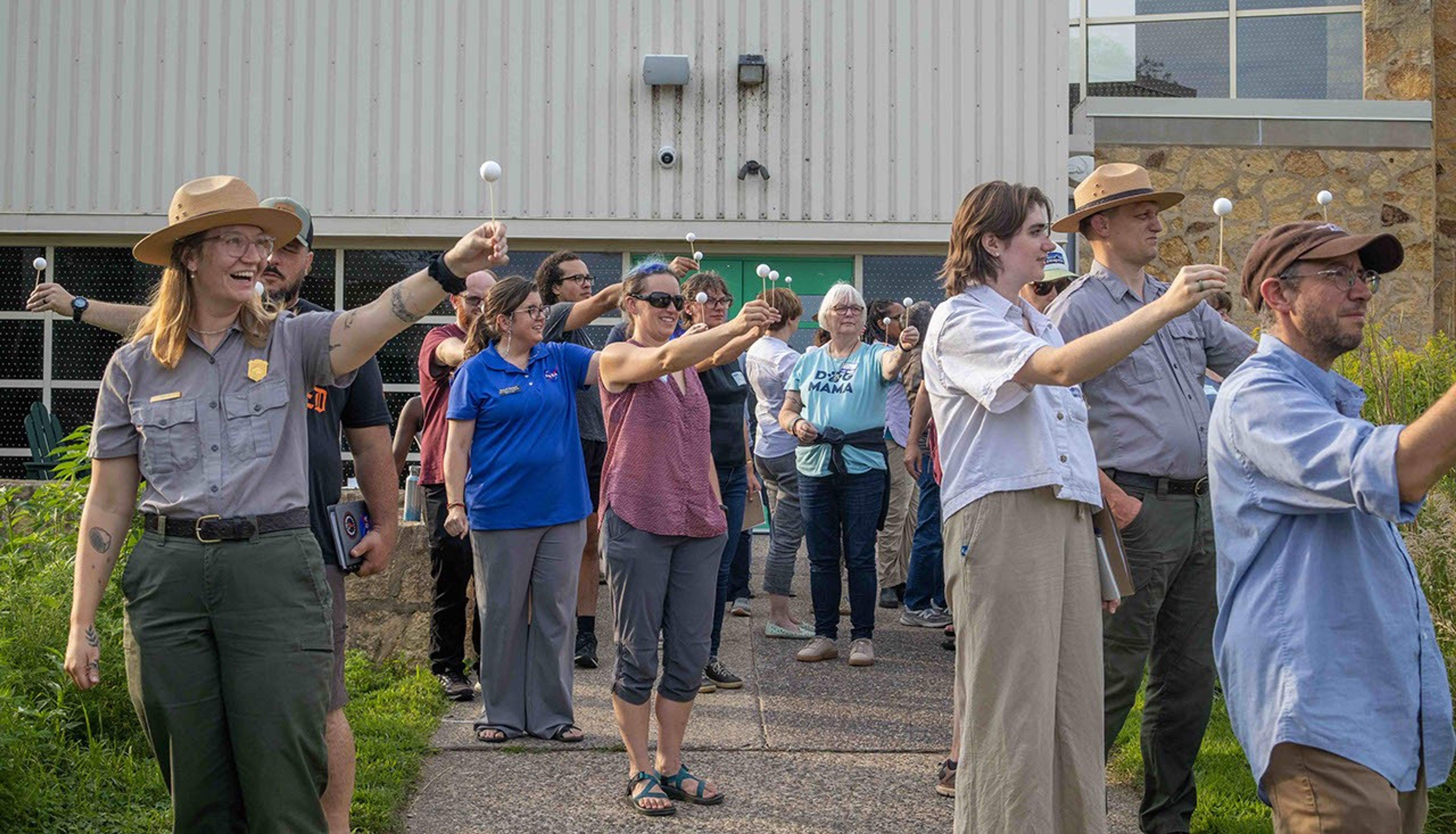By Christian Hill
Dr. Sian Proctor—a Tempe, Ariz.-based community college geosciences professor by day and “analog astronaut” when possible—is shedding her Earth-bound designation for full-blown “astronaut” as she prepares for the all-civilian Inspiration4 spaceflight aboard SpaceX’s Dragon capsule.
The three-day mission is the first all-civilian-crewed spaceflight, and is set to launch into Earth orbit as soon as Sept. 15. Proctor was awarded her seat on March 30 by winning an online competition put on by billionaire entrepreneur Jared Isaacman, who purchased his own ticket and three other seats from SpaceX.
“The stars aligned for this, and I still can’t believe it,” Proctor said. “I wrote a poem about why they should take me, I read the poem and submitted the video of it, it resonated with people, and here we are.”
In addition to lectures at South Mountain Community College and participating in analog missions such as a four-month NASA-funded Mars simulation in Hawaii, Proctor is a Solar System Ambassador—the JPL-originated NASA volunteer program aimed at raising public awareness of space exploration.
Since joining in 2018, Proctor has done a variety of events both in-person and online, reaching a broad segment of the population across the country including professional education societies, community college students, science festival participants, community-focused organizations, amateur astronomy clubs, nonprofits supporting STEM education, and the general public.
“She even collaborated with Solar System Ambassadors in other states for a global Twitter chat about space exploration,” said Solar System Ambassador coordinator Kay Ferrari.
Below, Proctor describes her experience of being selected for the mission, the winding path she took to reach space, her hopes for humanity and the future of space exploration, and how the Solar System Ambassador program has enhanced her ability to spread her message.
“I first heard about the competition because of a Super Bowl ad, where Jarrod’s [Isaacman] company announced two seats; one ‘generosity seat’ for a person who makes a donation to St. Jude’s Children Research Hospital, and one “Entrepreneurship seat” to a person who opened up an online shop through their website, and made a video submission as to why they should be selected,” Proctor said. “Funny thing was I didn’t even watch the Super Bowl, but someone on Twitter told me I should sign up.”
A Winding Path to Space
Proctor had been down the astronaut road before, and has a lifetime of NASA influence.
“My father really was one of the ‘hidden figures,’” Proctor said. “I was born on Guam directly because of human spaceflight, as my dad had worked at the tracking station during the Apollo missions. About eight-and-a-half months after Neil Armstrong stepped foot on the Moon, I was born—a literal moon landing celebration baby.”
She grew up wanting to be a fighter pilot with the goal of getting into space through the military, but she required glasses as a kid.
“Even back then I had imposter syndrome, as I didn’t think I was smart enough to be an astronaut any other way than through the military,” Proctor said. But in her late 30s, as her career in education and science communication blossomed, she was persuaded to apply for NASA’s astronaut program.
“I was qualified. I had a Ph.D., pilot’s license, Scuba certification … I just didn’t speak Russian,” Proctor said. “Still, I didn’t think I’d even get past the first round because I worked at a community college, and felt like you needed to go to MIT or Stanford or something.”
In 2009, Proctor made it to the final 47 applicants that NASA selected from 3,500 submissions. The space agency chose nine new astronauts that year, but Proctor was not one of them. Over the next decade, she applied twice more and was not among the finalists. When NASA announced another round of applications in February 2020, Proctor passed.
“I had just turned 50, and just felt it wasn’t my route to space anymore,” Proctor said. “And even as I was turning that down, I remember saying that maybe one day I could figure out a commercial space route, thinking it would be a decade away at least. Not realizing it was going to be literally one year later.”
In that year, like most of the country, Proctor spent a lot more time at home due to Covid. Her favorite hobby of traveling was out of the question, so she picked up poetry and painting.
“I put my time and all of my creative energy into training myself to be an artist,” Proctor said. Her art pieces are done in the style of Afrofuturism, and ended up being the center pieces for the online marketplace she needed to develop to be entered in the astronaut competition, along with her video submission.
“My art reflects the idea in my poem submission about ‘JEDI’ space [Justice, Equity, Diversity, Inclusion], and how we need to think about access to space,” Proctor said. “We all want that ‘Star Trek’ world, where you have representation and equal access to space. And when you start looking at how many female Black astronauts there have been at NASA, it’s a poor showing. There’s been just one Black astronaut assigned to the ISS in the past 20 years. You start thinking about all of the phone calls to schools, and the science videos they’ve done on the ISS, and there are no Black people in them. When kids are looking for role models in those places, we’ve got to be actively pursuing that ‘JEDI’ space.”
With her ticket punched, Proctor—who will operate as pilot—is training with the three other members of the Inspiration4 Dragon crew—Isaacman, who will be commander of the mission, Lockheed Martin engineer Christopher Sembroski, and St. Jude physician assistant Hayley Arceneaux. The team recently completed a three-day hike to Camp Muir on Washington’s Mt. Rainier as a crew bonding exercise.
“NASA does similar crew experiences with their astronauts,” Proctor said. “And this hike was by far one of the hardest I’ve done in my life. But for our crew, it was a great learning experience. You get pushed to your limits in an activity you’re not used to, and you end up relying on your crew to find the strength to continue on with the endeavor.”
Bringing Solar System Ambassadorship to Space
With her flight now just months away, Proctor is already thinking of what she can bring on the voyage.
“I plan on bringing each of my four Solar System Ambassador badges that I’ve received since joining in 2018. I want to bring as much of the history behind my journey that got me here, and this program is a part of that,” Proctor said.
“As a representative on this unique mission on a civilian space flight, it really is giving me that moment to share my love of STEAM, and a new platform to create a space to inspire. And the Solar System Ambassador program has always been about that. The amount of outreach that I’ve been able to do increases more and more, and it makes me very proud to be a part of this program, and to be able to highlight it on this journey.”
For Ferrari at JPL, Proctor’s plan to bring along her badges struck a chord.
“I’m tearing up hearing about it,” Ferrari said. “Solar System Ambassadors take great pride in the connection they have with NASA through the SSA program.”
As for what this level of exposure might mean for the program, Ferrari sees the potential for another large wave of new volunteer applicants.
“Last I heard, Sian’s flight is scheduled for September – our application period,” she says. “It feels like Solar System Ambassadors are coming out of their Covid hibernation with their events. It’s a slow and deliberate process to begin doing more in-person events – which is okay with us. We want everyone to stay safe and follow the guidelines. One lesson we all learned is that they’re not going to give up the virtual events they’ve been doing over the past year, and we’re likely to see more hybrid events being reported in the future.”
And the future of SSA is looking especially bright, thanks to Proctor’s affiliation.
“I think this type of exposure could give us another ‘2017 Eclipse’ response – only potentially larger,” Ferrari said.






































